Abstract
1. The discharge properties of individual motor units in different modes of voluntary contraction were studied with electromyographic techniques in the short toe extensor muscle of normal man. 2. The short toe extensor muscle consisted of type I and type II muscle fibres in about equal proportion. In some subjects there was type-grouping so that recordings with sufficient selectivity could easily be obtained. 3. Certain motor units could be driven continuously, attained regular firing intervals even at a firing rate of 10/sec, increased slowly in firing rate with increase in contraction strength, had maximum firing rate below 30/sec during sustained contraction but above 60/sec in twitch contraction. 4. Other motor units could not be dirven continuously, did not fire repeatedly at rates below 20/sec, increased rapidly in firing rate with increase in contraction strength and attained firing rates above 100/sec. 5. There were intermediate forms between continuously firing low frequency motor units and intermittently firing high frequency motor units. 6. In a prolonged contraction of constant strength only continuously firing motor units were active. 7. On rapid accelerations, however, both continuously and intermittently firing motor units were active and played about the same role. 8. This applied also to prolonged series of accelerations as in rhythmically alternating movements. 9. In twitch contractions selective activation of intermittently firing motor units occurred if the muscle was relaxed prior to the twitch and great effort was used to elicit the twitch and minimum duration of the twitch was intended. 10. It is suggested that continuously firing low frequency motor units have type I muscle fibres and intermittently firing high frequency units have type II muscle fibres and that the order of recruitment and the relative roles of the two motor unit types are adapted to the mode of contraction.
Full text
PDF
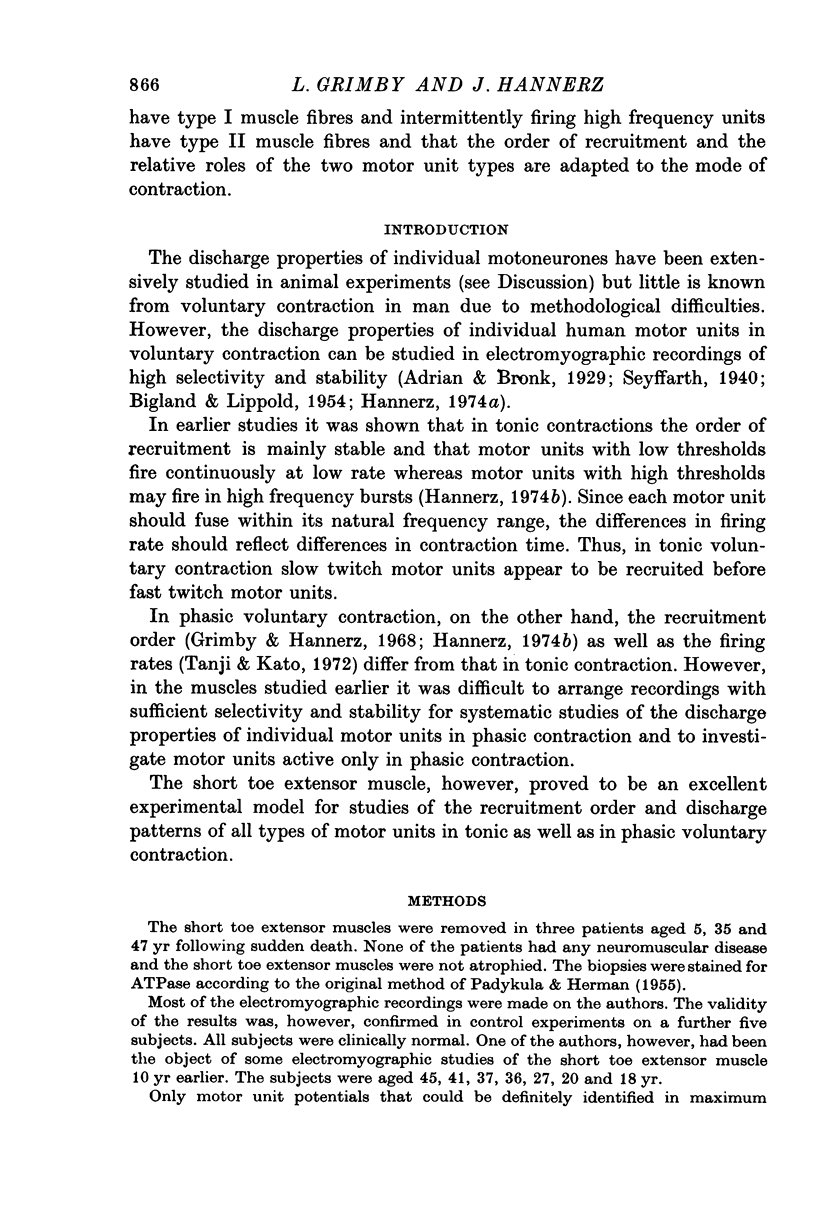
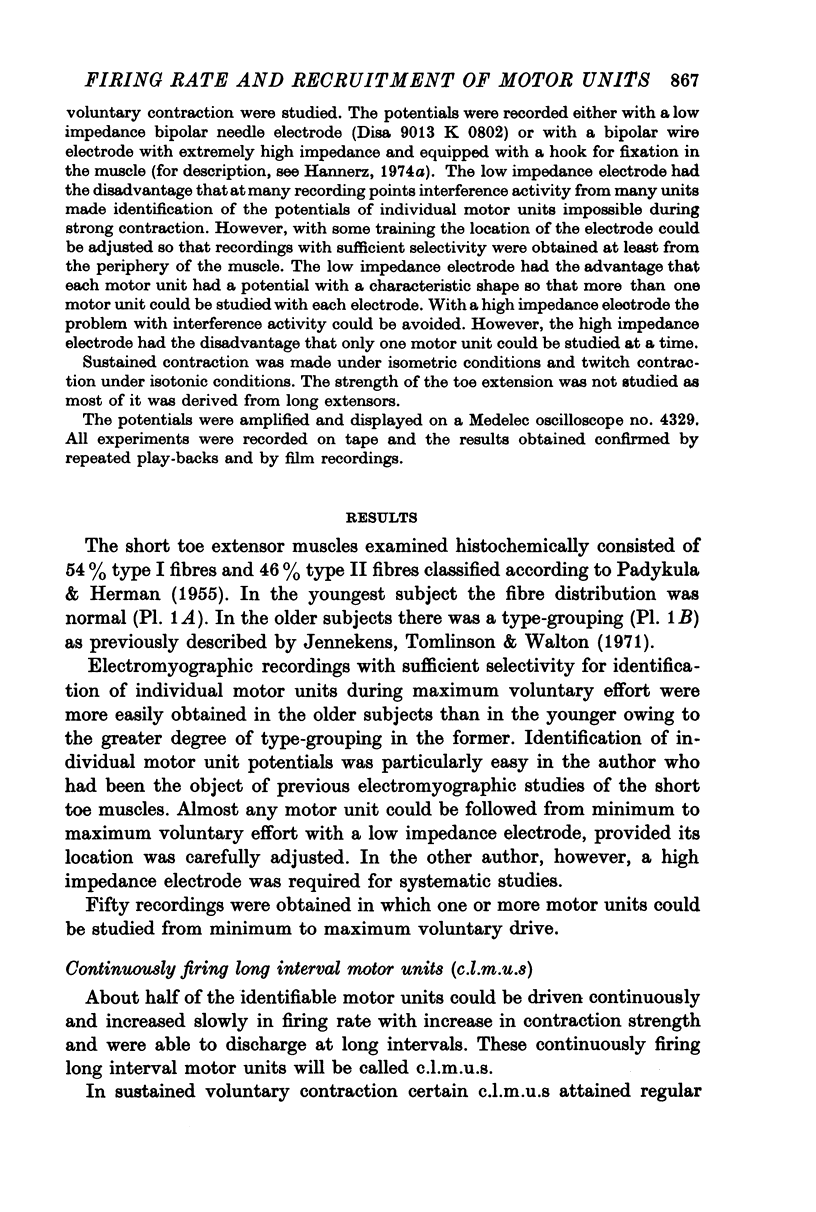


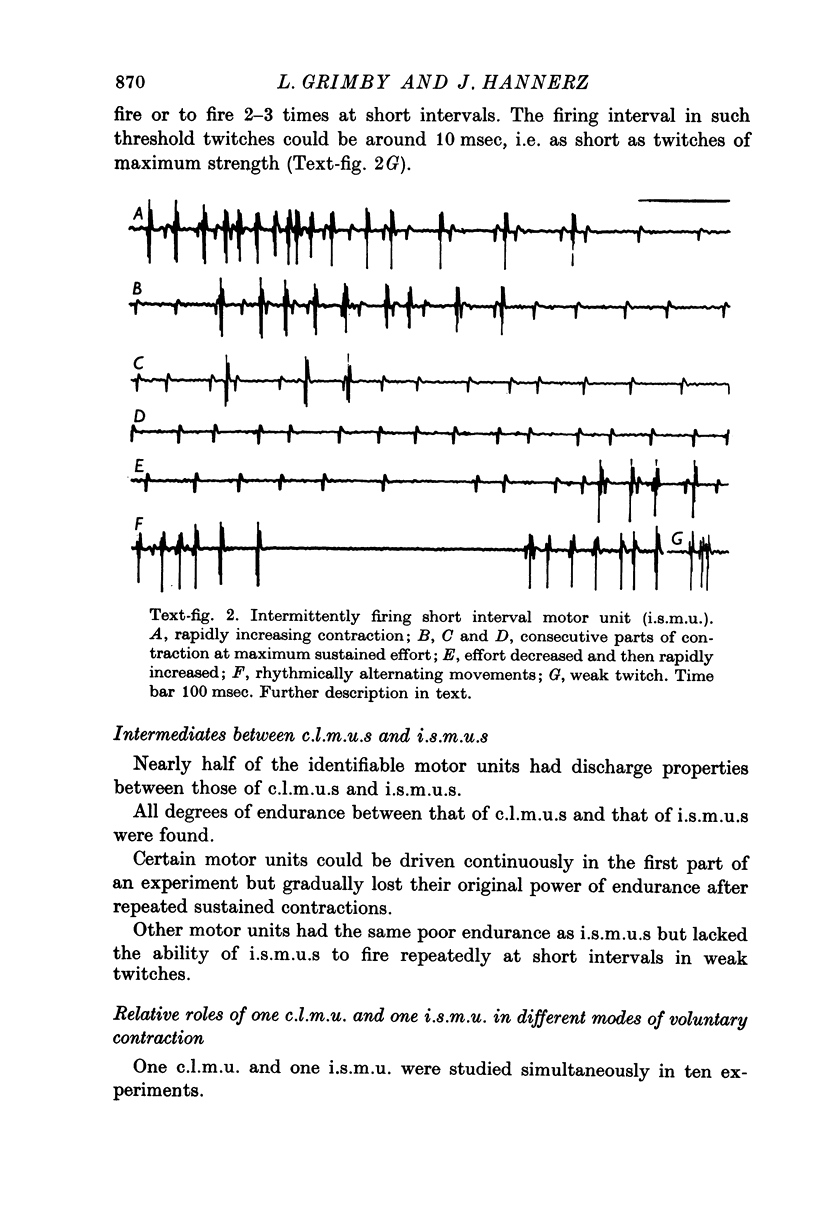
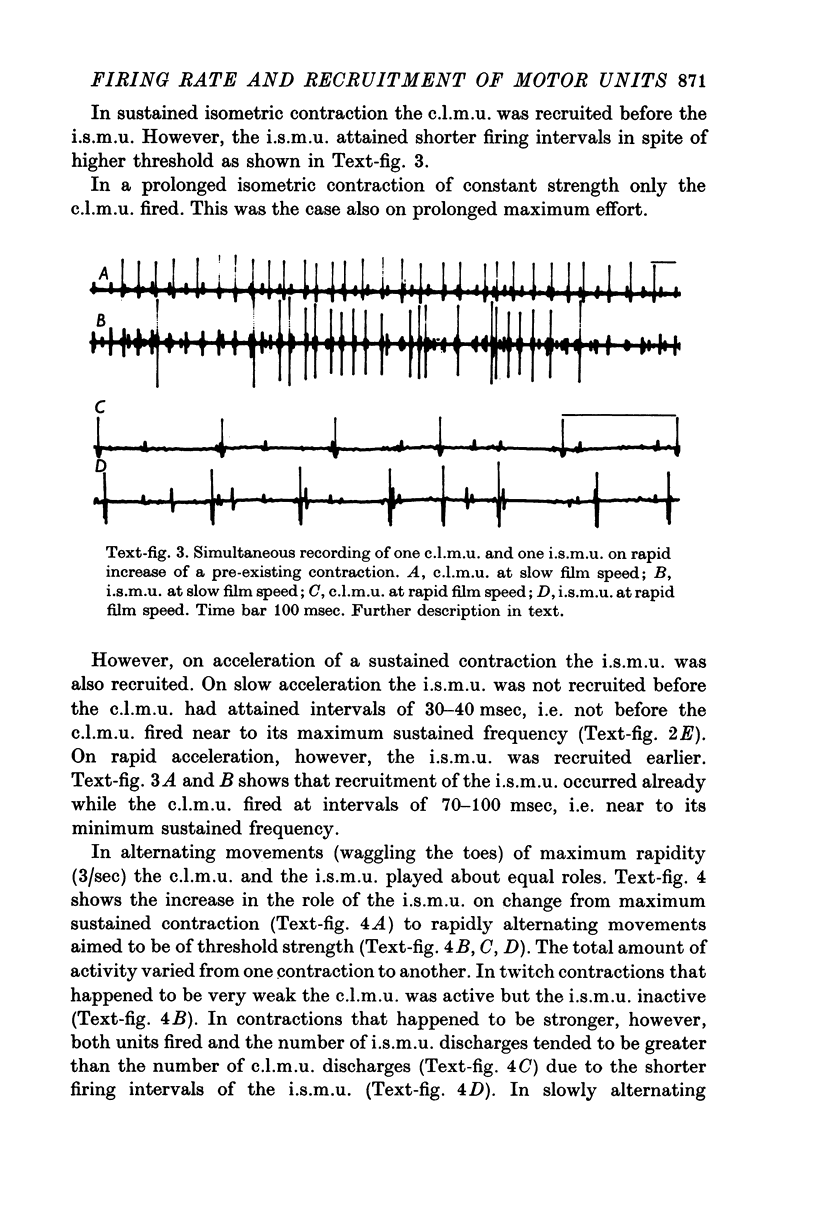

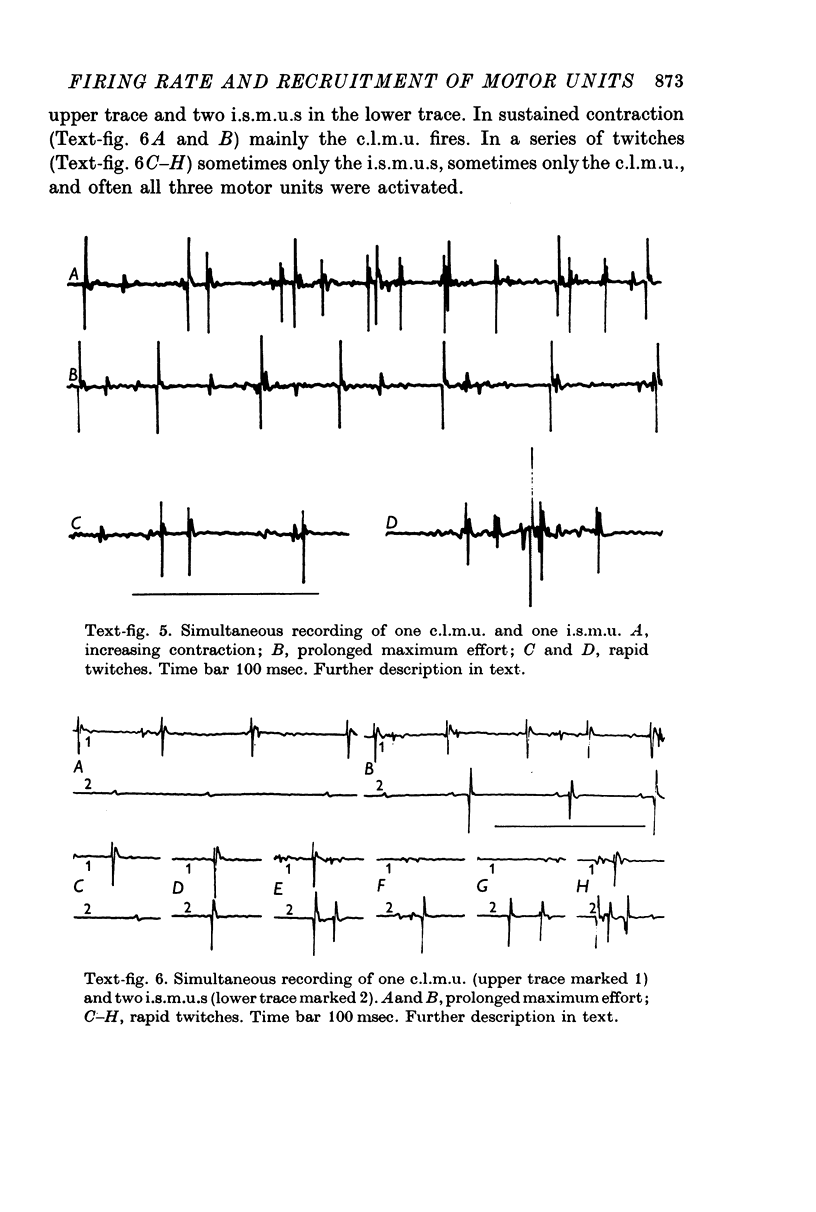


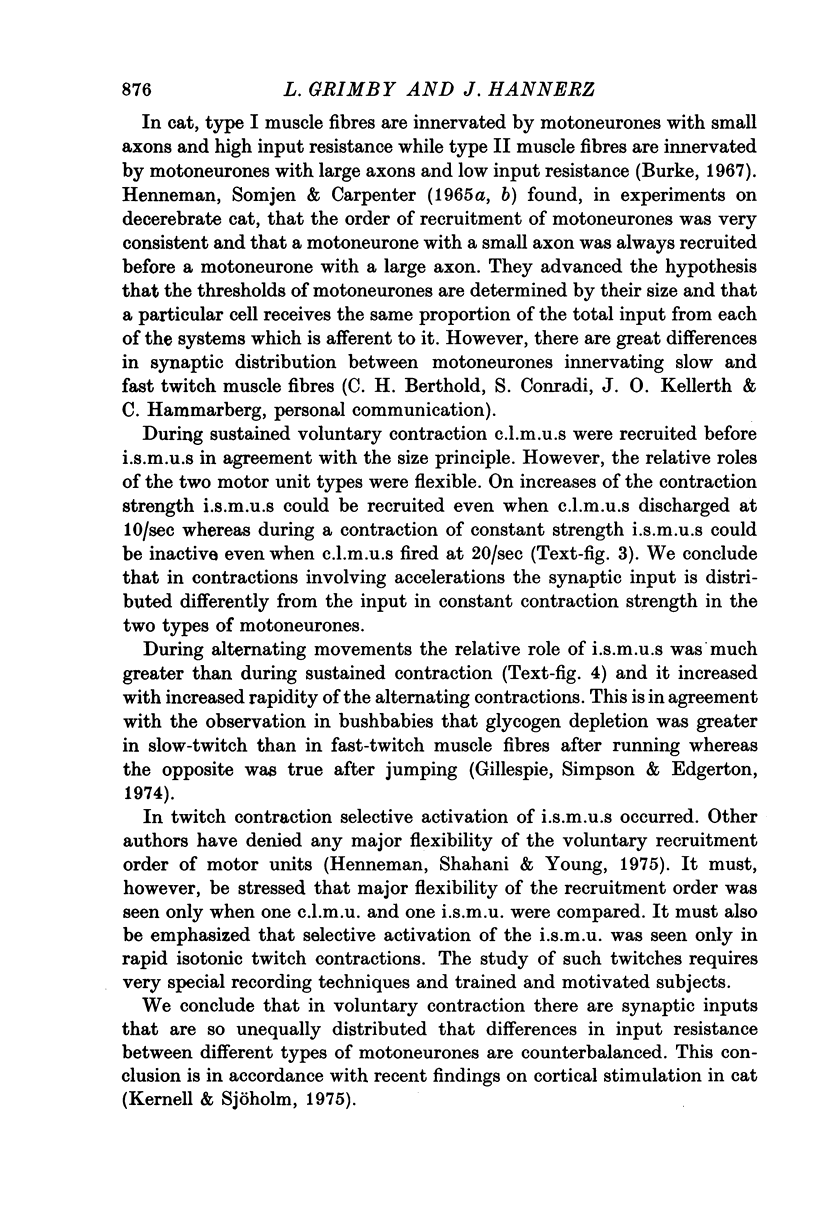
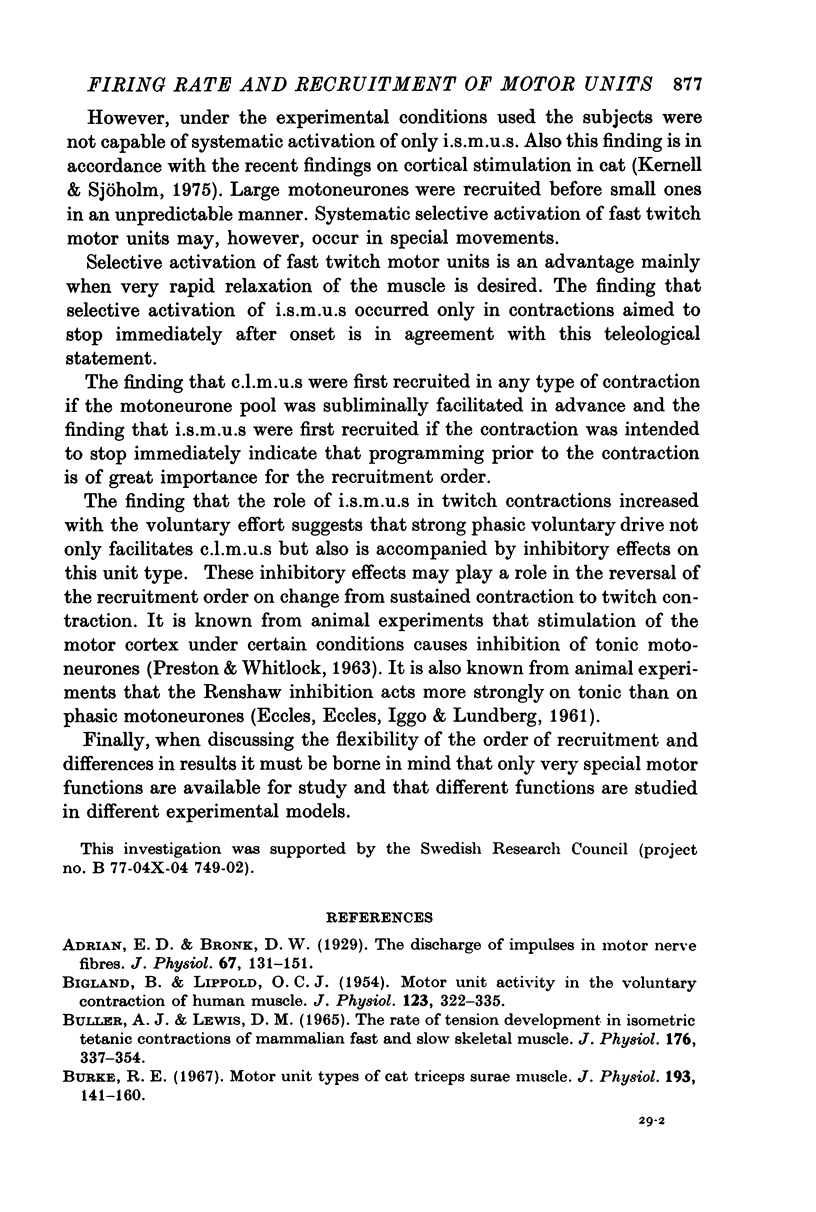
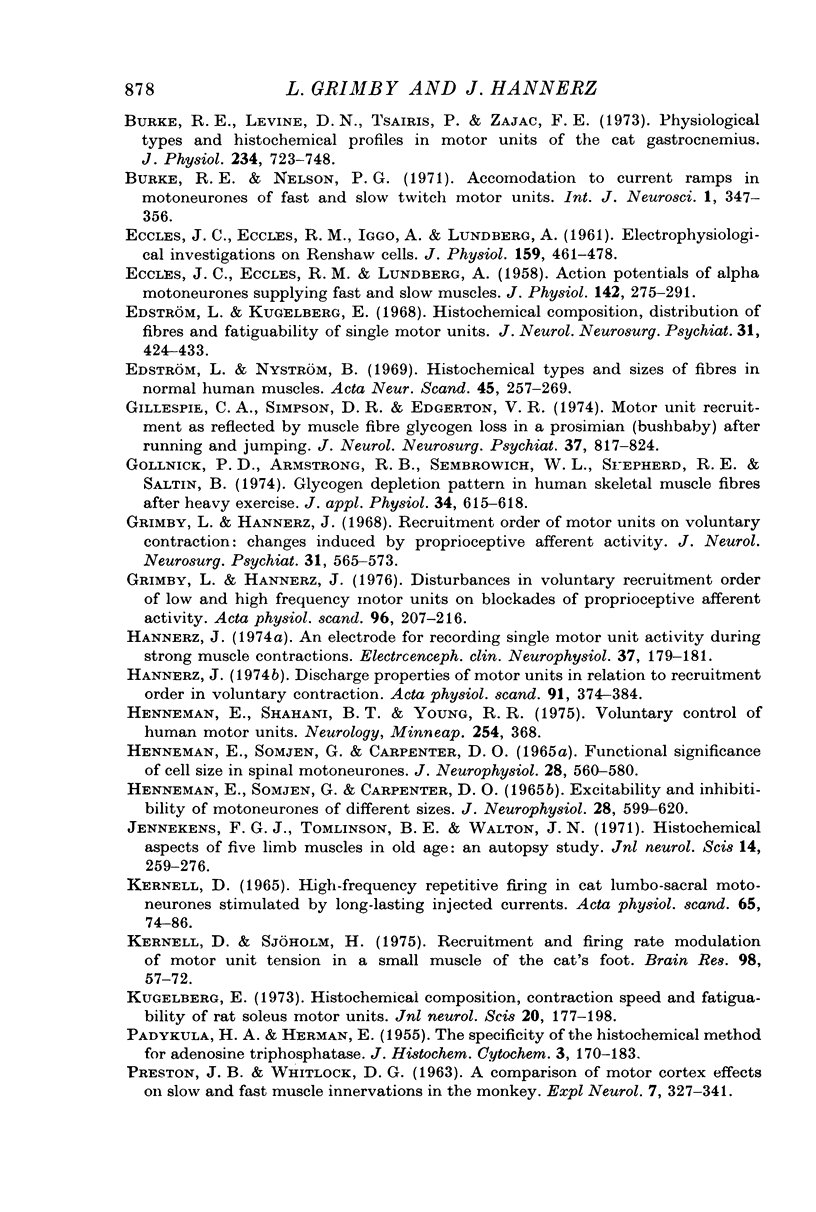
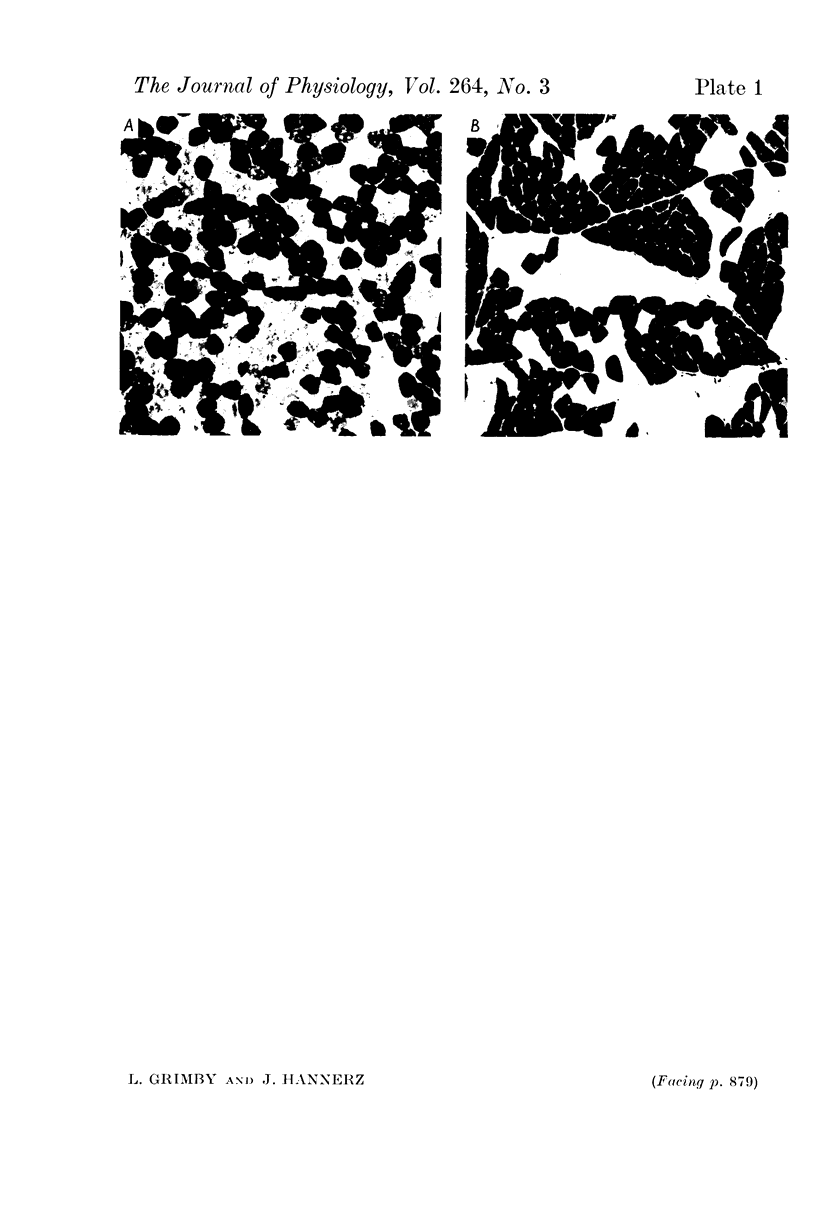

Images in this article
Selected References
These references are in PubMed. This may not be the complete list of references from this article.
- Adrian E. D., Bronk D. W. The discharge of impulses in motor nerve fibres: Part II. The frequency of discharge in reflex and voluntary contractions. J Physiol. 1929 Mar 20;67(2):i3–151. [PMC free article] [PubMed] [Google Scholar]
- BIGLAND B., LIPPOLD O. C. Motor unit activity in the voluntary contraction of human muscle. J Physiol. 1954 Aug 27;125(2):322–335. doi: 10.1113/jphysiol.1954.sp005161. [DOI] [PMC free article] [PubMed] [Google Scholar]
- BULLER A. J., LEWIS D. M. THE RATE OF TENSION DEVELOPMENT IN ISOMETRIC TETANIC CONTRACTIONS OF MAMMALIAN FAST AND SLOW SKELETAL MUSCLE. J Physiol. 1965 Feb;176:337–354. doi: 10.1113/jphysiol.1965.sp007554. [DOI] [PMC free article] [PubMed] [Google Scholar]
- Burke R. E., Levine D. N., Tsairis P., Zajac F. E., 3rd Physiological types and histochemical profiles in motor units of the cat gastrocnemius. J Physiol. 1973 Nov;234(3):723–748. doi: 10.1113/jphysiol.1973.sp010369. [DOI] [PMC free article] [PubMed] [Google Scholar]
- Burke R. E. Motor unit types of cat triceps surae muscle. J Physiol. 1967 Nov;193(1):141–160. doi: 10.1113/jphysiol.1967.sp008348. [DOI] [PMC free article] [PubMed] [Google Scholar]
- Burke R. E., Nelson P. G. Accommodation to current ramps in motoneurons of fast and slow twitch motor units. Int J Neurosci. 1971 Jun;1(6):347–356. doi: 10.3109/00207457109146983. [DOI] [PubMed] [Google Scholar]
- ECCLES J. C., ECCLES R. M., IGGO A., LUNDBERG A. Electrophysiological investigations on Renshaw cells. J Physiol. 1961 Dec;159:461–478. doi: 10.1113/jphysiol.1961.sp006821. [DOI] [PMC free article] [PubMed] [Google Scholar]
- ECCLES J. C., ECCLES R. M., LUNDBERG A. The action potentials of the alpha motoneurones supplying fast and slow muscles. J Physiol. 1958 Jul 14;142(2):275–291. doi: 10.1113/jphysiol.1958.sp006015. [DOI] [PMC free article] [PubMed] [Google Scholar]
- Edström L., Kugelberg E. Histochemical composition, distribution of fibres and fatiguability of single motor units. Anterior tibial muscle of the rat. J Neurol Neurosurg Psychiatry. 1968 Oct;31(5):424–433. doi: 10.1136/jnnp.31.5.424. [DOI] [PMC free article] [PubMed] [Google Scholar]
- Edström L., Nyström B. Histochemical types and sizes of fibres in normal human muscles. A biopsy study. Acta Neurol Scand. 1969;45(3):257–269. doi: 10.1111/j.1600-0404.1969.tb01238.x. [DOI] [PubMed] [Google Scholar]
- Gillespie C. A., Simpson D. R., Edgerton V. R. Motor unit recruitment as reflected by muscle fibre glycogen loss in a prosimian (bushbaby) after running and jumping. J Neurol Neurosurg Psychiatry. 1974 Jul;37(7):817–824. doi: 10.1136/jnnp.37.7.817. [DOI] [PMC free article] [PubMed] [Google Scholar]
- Gollnick P. D., Armstrong R. B., Sembrowich W. L., Shepherd R. E., Saltin B. Glycogen depletion pattern in human skeletal muscle fibers after heavy exercise. J Appl Physiol. 1973 May;34(5):615–618. doi: 10.1152/jappl.1973.34.5.615. [DOI] [PubMed] [Google Scholar]
- Grimby L., Hannerz J. Disturbances in voluntary recruitment order of low and high frequency motor units on blockades of proprioceptive afferent activity. Acta Physiol Scand. 1976 Feb;96(2):207–216. doi: 10.1111/j.1748-1716.1976.tb10190.x. [DOI] [PubMed] [Google Scholar]
- Grimby L., Hannerz J. Recruitment order of motor units on voluntary contraction: changes induced by proprioceptive afferent activity. J Neurol Neurosurg Psychiatry. 1968 Dec;31(6):565–573. doi: 10.1136/jnnp.31.6.565. [DOI] [PMC free article] [PubMed] [Google Scholar]
- HENNEMAN E., SOMJEN G., CARPENTER D. O. FUNCTIONAL SIGNIFICANCE OF CELL SIZE IN SPINAL MOTONEURONS. J Neurophysiol. 1965 May;28:560–580. doi: 10.1152/jn.1965.28.3.560. [DOI] [PubMed] [Google Scholar]
- Hannerz J. An electrode for recording single motor unit activity during strong muscle contractions. Electroencephalogr Clin Neurophysiol. 1974 Aug;37(2):179–181. doi: 10.1016/0013-4694(74)90011-x. [DOI] [PubMed] [Google Scholar]
- Hannerz J. Discharge properties of motor units in relation to recruitment order in voluntary contraction. Acta Physiol Scand. 1974 Jul;91(3):374–385. doi: 10.1111/j.1748-1716.1974.tb05692.x. [DOI] [PubMed] [Google Scholar]
- Henneman E., Somjen G., Carpenter D. O. Excitability and inhibitability of motoneurons of different sizes. J Neurophysiol. 1965 May;28(3):599–620. doi: 10.1152/jn.1965.28.3.599. [DOI] [PubMed] [Google Scholar]
- Jennekens F. G., Tomlinson B. E., Walton J. N. Histochemical aspects of five limb muscles in old age. An autopsy study. J Neurol Sci. 1971 Nov;14(3):259–276. doi: 10.1016/0022-510x(71)90216-4. [DOI] [PubMed] [Google Scholar]
- Kernell D., Sjöholm H. Recruitment and firing rate modulation of motor unit tension in a small muscle of the cat's foot. Brain Res. 1975 Nov 7;98(1):57–72. doi: 10.1016/0006-8993(75)90509-0. [DOI] [PubMed] [Google Scholar]
- Kugelberg E. Histochemical composition, contraction speed and fatiguability of rat soleus motor units. J Neurol Sci. 1973 Oct;20(2):177–198. doi: 10.1016/0022-510x(73)90029-4. [DOI] [PubMed] [Google Scholar]
- PADYKULA H. A., HERMAN E. The specificity of the histochemical method for adenosine triphosphatase. J Histochem Cytochem. 1955 May;3(3):170–195. doi: 10.1177/3.3.170. [DOI] [PubMed] [Google Scholar]
- PRESTON J. B., WHITLOCK D. G. A comparison of motor cortex effects on slow and fast muscle innervations in the monkey. Exp Neurol. 1963 Apr;7:327–341. doi: 10.1016/0014-4886(63)90079-7. [DOI] [PubMed] [Google Scholar]
- Tanji J., Kato M. Discharges of single motor units at voluntary contraction of abductor digiti minimi muscle in man. Brain Res. 1972 Oct 27;45(2):590–593. doi: 10.1016/0006-8993(72)90488-x. [DOI] [PubMed] [Google Scholar]
- Warmolts J. R., Engel W. K. Open-biopsy electromyography. I. Correlation of motor unit behavior with histochemical muscle fiber type in human limb muscle. Arch Neurol. 1972 Dec;27(6):512–517. doi: 10.1001/archneur.1972.00490180048011. [DOI] [PubMed] [Google Scholar]



